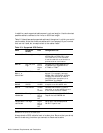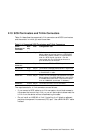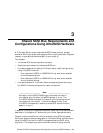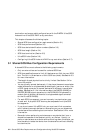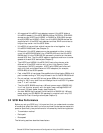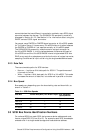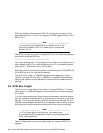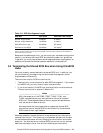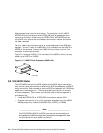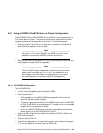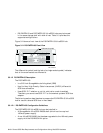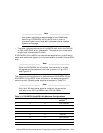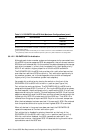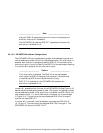
SCSI bus adapters have a default SCSI ID that you can change by using
console commands or utilities. For example, a KZPSA adapter has an initial
SCSI ID of 7.
______________________ Note _______________________
If you are using a DS-DWZZH-05 UltraSCSI hub with fair
arbitration enabled, SCSI ID numbering will change (see
Section 3.6.1.2).
Use the following priority order to assign SCSI IDs to the SCSI bus adapters
connected to a shared SCSI bus:
7-6-5-4-3-2-1-0-15-14-13-12-11-10-9-8
This order specifies that 7 is the highest priority, and 8 is the lowest priority.
When assigning SCSI IDs, use the highest priority ID for member systems
(starting at 7). Use lower priority IDs for disks.
Note that you will not follow this general rule when using the DS-DWZZH-05
UltraSCSI hub with fair arbitration enabled.
The SCSI ID for a disk in a BA350 storage shelf corresponds to its slot
location. The SCSI ID for a disk in a BA356 or UltraSCSI BA356 depends
upon its slot location and the personality module SCSI bus address switch
settings.
3.4 SCSI Bus Length
There is a limit to the length of the cables in a shared SCSI bus. The total
cable length for a SCSI bus segment is calculated from one terminated end
to the other.
If you are using devices that have the same transmission method and data
path (for example, wide differential), a shared bus will consist of only one bus
segment. If you have devices with different transmission methods, you will
have both single-ended and differential bus segments, each of which must be
terminated only at both ends and must adhere to the rules on bus length.
______________________ Note _______________________
In a TruCluster Server configuration, you always have
single-ended SCSI bus segments since all of the storage shelves
use a single-ended bus.
Table 3–2 describes the maximum cable length for a physical SCSI bus
segment.
3–6 Shared SCSI Bus Requirements and Configurations Using UltraSCSI Hardware



